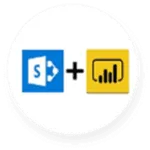EPC Group PowerApps Model-Driven Apps
Let’s transform your colleagues into citizen developers. Reduce development costs, increase overall efficiency, and bring agility to the business as we enable your staff to build low-code business apps with Microsoft Power Apps.
What is Model-Driven App?
You will be taught how to design, test and publish new apps that work with a variety of data sources.

Model-Driven App follows a data-first approach. The model-driven app is built within Power Apps – a platform in which native Dynamics 365 apps are built. The low-code or no-code app development approach empowers anyone, even a novice or someone with little or no coding knowledge for developing a model-Driven app. These apps do have the capability to generate data models. It makes them more suitable for building complex and sophisticated business applications.
- As the name suggests – model-driven applications are driven by data models.
- It works as a GUI for managing data in Dataverse (Common Data Service) (CDS) database.
- To build and use Model-Driven apps, you need Power Apps per-use, per-app license, or Dynamics 365 subscription.
- These apps follow a no-code or low-code component approach.
- You can connect a single Model-Driven app to multiple entities or CDS tables.
- Before building a Model-Driven app, it is mandatory to prepare a data model first.
- To control data management, it is essential to create a business process FLOW.
- You can enhance the functionality and efficiency of a Model-Driven app by adding different components like dashboards, business process flows, tables, forms, views, charts, etc.
Your familiarity with Dynamics 365 gives you an upper hand in understanding the Power Apps platform and the Model-driven apps. Furthermore, you can customize and adapt the Model-Driven power apps with the Java Script.

How Model-Driven Power Apps work?
Model-Driven power apps are good at handling daily actions performed by the users for data interaction. You do not have to write even a single line of code or use any formulas to create these apps. Model-driven apps can be accessed in a web browser, mobile devices, and in Outlook.
Model-driven power apps are data-centric and have uniform navigation, data interaction, and tools with which users can easily work on data irrespective of the data entity. The views and detail screens are populated based on the data structure. Using those views and form designers, users can customize the user experience for that specific app staying within the available limits of views and forms. It saves time to build a new application ensuring consistent user experience between data and other model-driven apps.
If new entitles are updated in the data models, they automatically get basic forms and views. It allows users to list, view, and modify data with minimal effort without writing a single line of code.
When a user creates a CDS entity, the forms, views, APIs automatically get created. They exist even if a user fails to create a model-driven app for other users. However, while creating a model-driven app design, users need to reference one or more entities and select appropriate forms and views to add to it. What components will be visible to the user solely depends on the app. Besides, multiple model-driven power apps might reference the same forms and views to create a different user experience.
Model-driven power app use cases:
- To design businesses processes and workflows
- To manage opportunities.
- To offer excellent customer service management.
- To manage events.
- To provide end-to-end solutions.

Model-driven apps VS Canvas Apps
Canvas apps and model-driven apps both have different use cases. Although both power apps use similar design components, they are fundamentally different in terms of user control.
- Model-driven apps are ideas for building end-to-end business solutions.
- Canvas apps are good for building task-based or role-based business applications.
- Model-driven apps are controlled by the information and data provided by the user.
- In canvas apps, you have complete control over every single aspect of the result.
- Model-Driven apps being data-centric are comparatively less flexible due to less scope to modify specific segments.
- Canvas apps are more flexible, delighting to use, and offer a more instinctive user experience.
- Model-driven apps are more structured and expand their scope to meet user expectations.
- Canvas apps are less structured as they render only two basic design possibilities – landscape and portrait orientation.
Our PowerApps Model-Driven Apps Services

Create Professional-Grade Apps
We will help you and your team rapidly build low-code professional apps that will rejuvenate processes and prepare you to face critical business challenges.

Harness AI-Powered Assistance
We will introduce you to the most advanced natural language AI model (OpenAI GPT-3) to generate Power FX formulas automatically for building apps learning advanced concepts.

Add power to Your Apps
We will democratize model-driven app development by helping you find the correct function and syntax needed to refine the formulae and build more complex solutions.

Reduce App-Development Costs
We will reduce your app development costs by enabling citizen developers to build power apps using prebuilt templates, drag-and-drop simplicity, and a quick deployment process.


Realize Additional Value
Our team ensures you get higher ROI on previous IT investments by expanding the power apps capabilities to other Microsoft solutions like Dynamics 365, SharePoint, and MS Teams.

Enhance Application Security
We assist in setting permissions within Active Directory to limit access to data and systems and implement security through Azure AD to increase application security in many ways.

Code Management
We maintain and further develop Power Apps code developed by or handed over to us. We also train users on the solutions for better ongoing development and app management.

Security Setup for Model-Driven App
Ensuring optimum security of your model-driven power apps, we will work with you to deploy user-created apps by keeping security roles and end-user access in mind.
Why Choose Us
Why Organizations Recognize EPC Group's Consulting Services as the Industry Leader

EPC Group wrote the book on SharePoint & Power BI

Microsoft Partner for 25+ Years
Over 4 million Office 365 users successfully migrated
200+ years combined senior team migration experience




